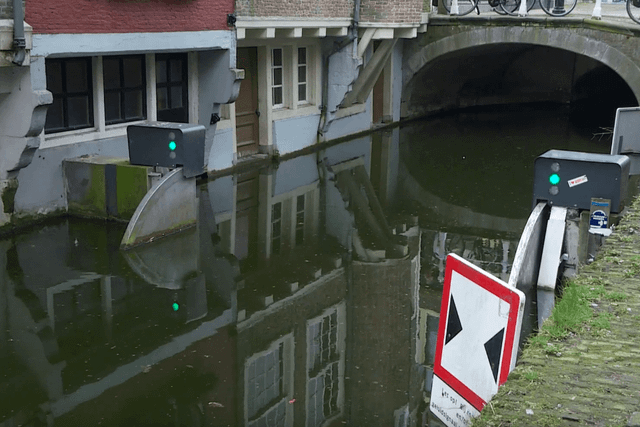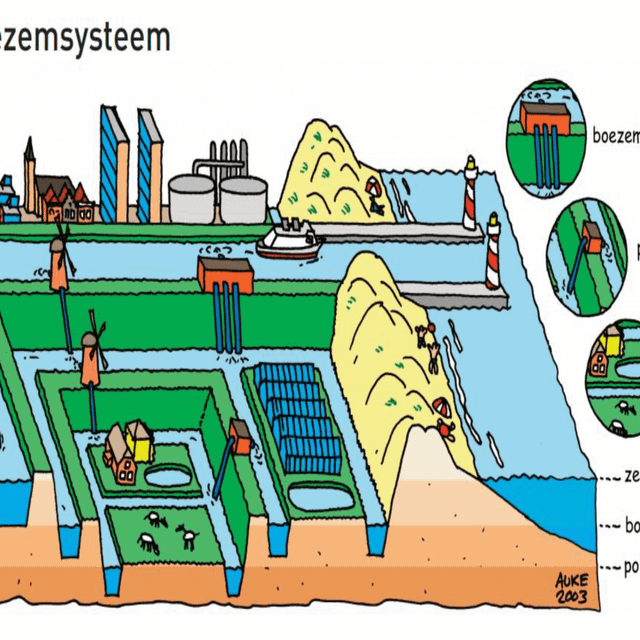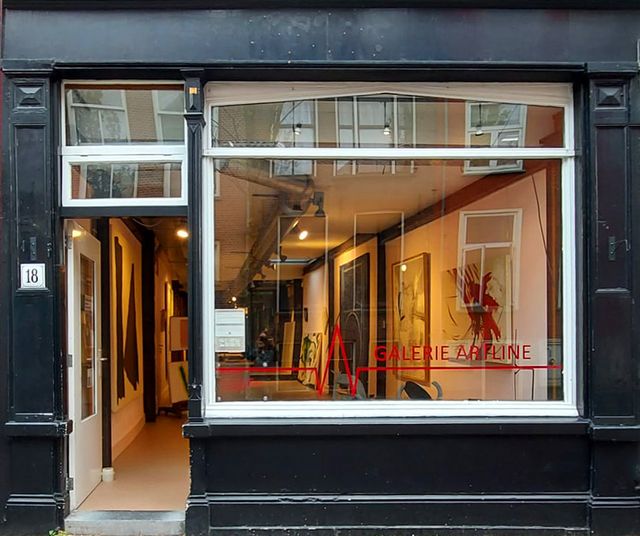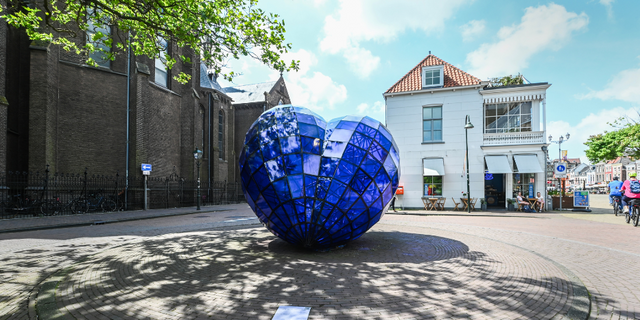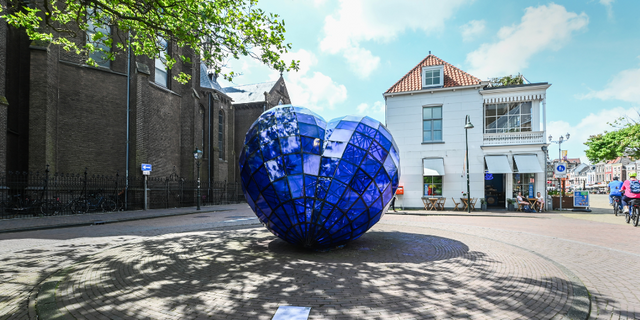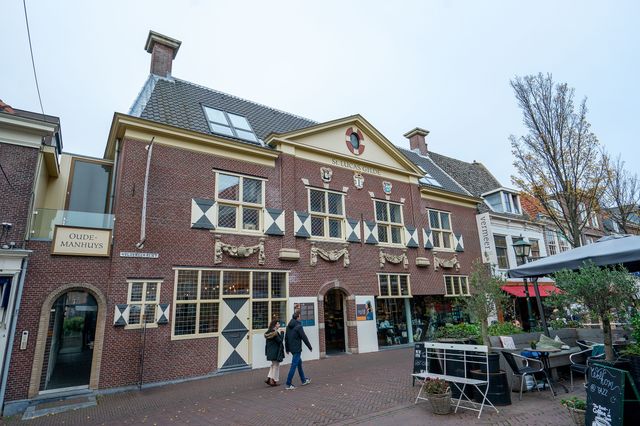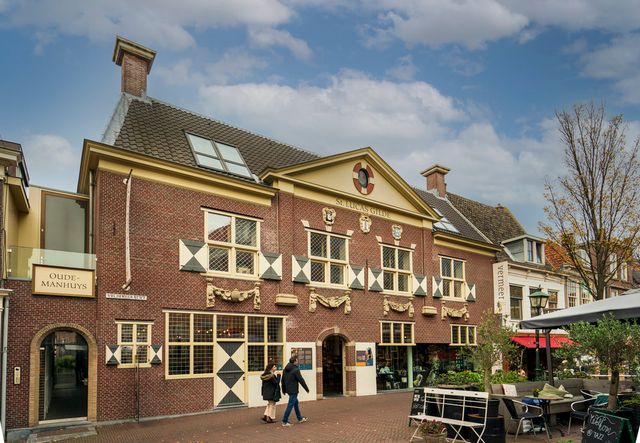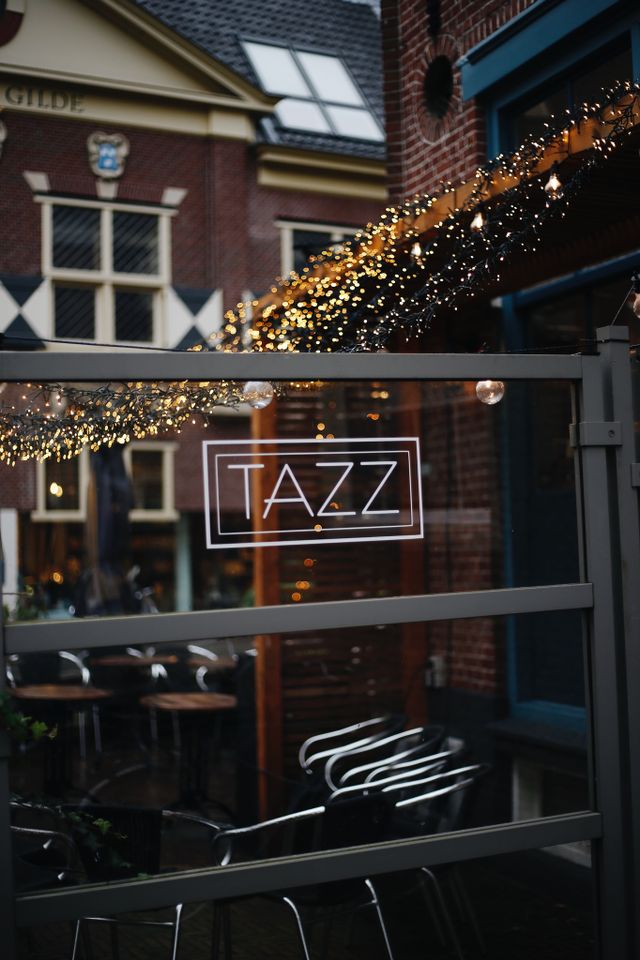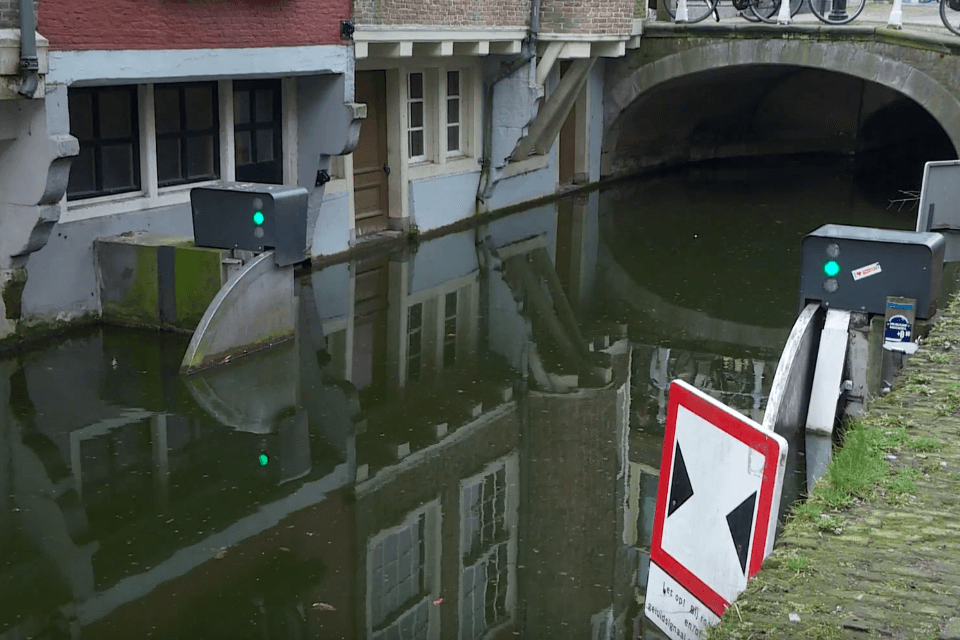
Voldersgracht - one of the six tilting barriers - Walkingroute Waterways
In the Voldersgracht you can see one of the six tilting barriers that protect Delft city centre from flooding.
The tilting barrier mechanism and the boezem
All of the tilting barriers are 'open', which means they are lying flat, flush with the bottom of the canal. We do this in order to maintain optimum water quality in the canals of Delft by allowing the water to flow freely. This is possible because the surface water in the canal is part of the large, primary Delfland water system (the Boezem). At times of high flood risk, the tilting barriers are raised by hydraulic cylinders, thus protecting the most vulnerable part of the historic city centre from flooding.
Hydraulic engineering structures and the historic city centre
These new hydraulic engineering struc…
The tilting barrier mechanism and the boezem
All of the tilting barriers are 'open', which means they are lying flat, flush with the bottom of the canal. We do this in order to maintain optimum water quality in the canals of Delft by allowing the water to flow freely. This is possible because the surface water in the canal is part of the large, primary Delfland water system (the Boezem). At times of high flood risk, the tilting barriers are raised by hydraulic cylinders, thus protecting the most vulnerable part of the historic city centre from flooding.
Hydraulic engineering structures and the historic city centre
These new hydraulic engineering structures are of course not part of the original historic cityscape. An architect was engaged to explore the best ways of building these structures as unobtrusively as possible among the historic and monumental buildings. The principle was that the structures may be seen, but they should not have a jarring effect on their surroundings. The hydraulic elements are concealed adjacent to the tilting barriers in canal-side cabinets that serve as benches. Wherever possible, the electrical equipment is concealed in existing electrical service cabinets, which are often in other streets.
Compartmentable Delft city centre
In the period between 2006 and 2008, Delfland and the City of Delft together installed six tilting barriers, two sliding gate barriers and a pumping station in the canals of the historic city centre of Delft. A study was made of which parts of the city centre are the most vulnerable (see the map Compartmentable city centre), looking to see which would be the most logical, desirable and practical places to install facilities for preventing flooding in the vulnerable areas. Closing the tilting barriers creates an isolated (compartmentalised) area in which the water level can be managed independently of the surrounding area.
A pumping station was built on the Kantoorgracht canal (at the Duyvelsgat Bridge) to pump out excess rainwater to the Schie (the Boezem) when the tilting barriers are raised.
